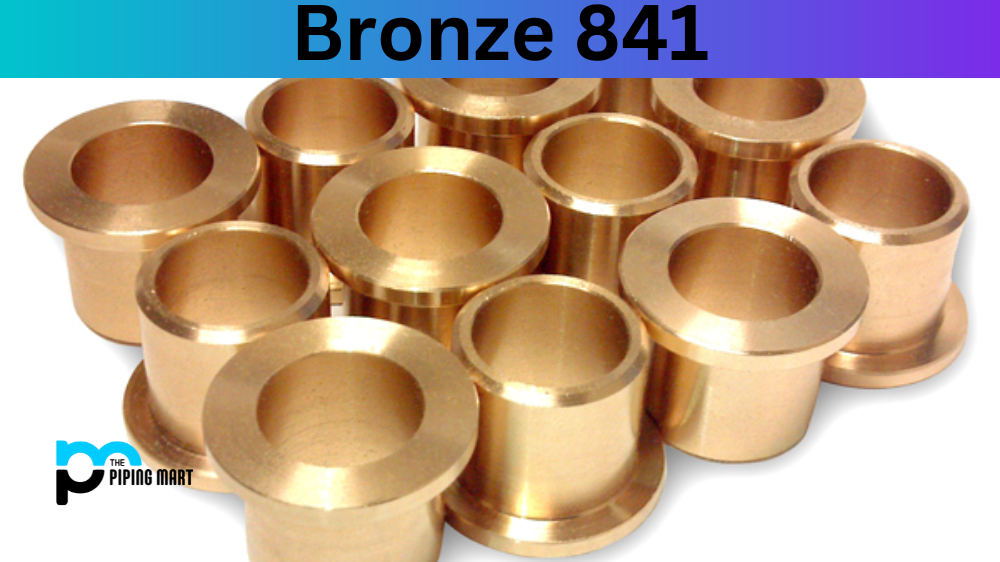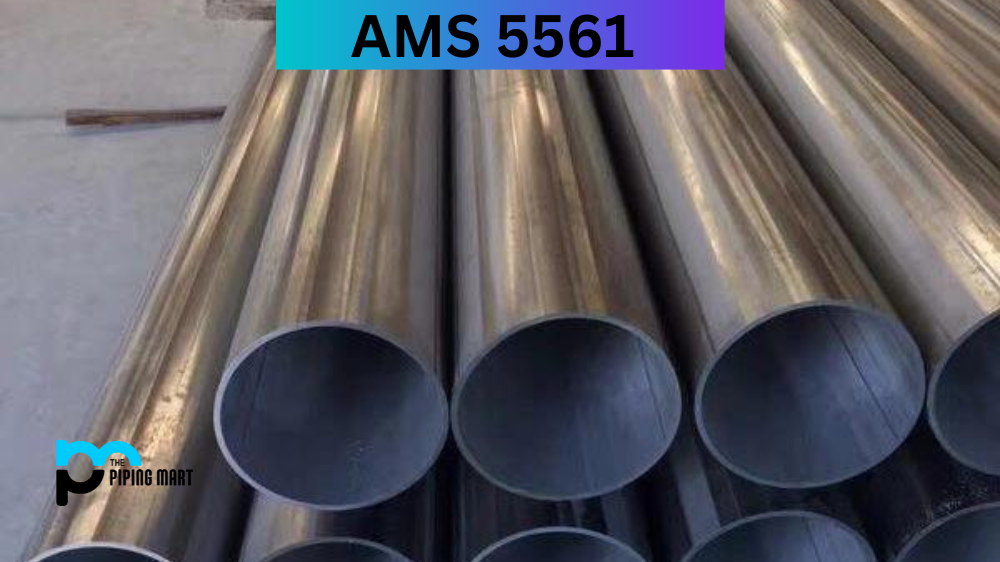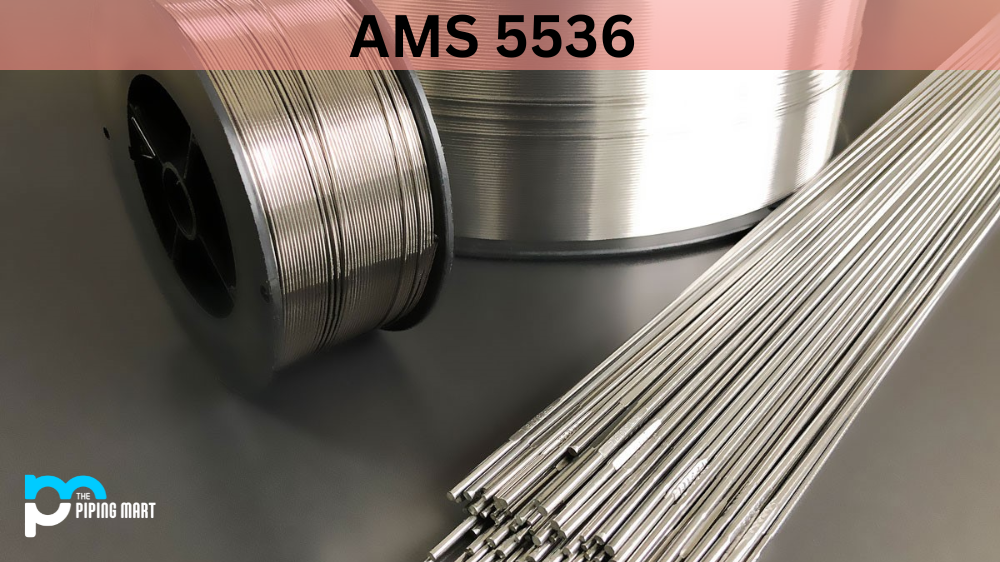SAE 841 is an alloy of copper, manganese, and aluminum widely used in the metalworking industry. Its mechanical strength and corrosion resistance combination makes it a popular choice for many applications. It also has excellent heat treatment properties and resistance, making it one of the most versatile metals available today. Let’s look closer at the chemical, physical, and mechanical properties of bronze 841 to see why it is so popular.
Bronze 841 Composition
SAE 841 is composed primarily of copper with additions of 0.2-0.5% manganese and 0.2-0.8% aluminum. The presence of these two elements improves the alloy’s strength and hardness properties while increasing its corrosion resistance. Adding small amounts of tin or zinc to the composition can also further strengthen it.
| C | CU | FE | SN | ZN | |
| Min/Max | 1.75 | 87.5 – 90.5 | 1 | 9.5 – 10.5 | |
| Nominals | – | – | – | – | – |
Bronze 841 Chemical Properties
Bronze is a metal alloy of copper and tin, making it a unique material due to its complex chemical composition. While its strength and malleability make it ideal for use in sculptures and other artwork, bronze can also be applied in numerous practical applications. Its corrosion resistance quality has made bronze 841, which is 88% copper and 12% tin, popularly used in plumbing hardware due to its durability when exposed to water. Further benefits of bronze 841 include its static properties that reduce wear and tear on parts, making it an ideal choice for construction materials. All these factors make bronze 841 one of the most sought-after metals due to its practicality, effectiveness, and cost-efficiency.
Bronze 841 Mechanical Properties
The mechanical properties of bronze 841 depend on its composition and processing history, such as cold working or heat treatment. This alloy generally has a high yield strength (up to 690MPa) and good fatigue resistance due to its high tensile strength (up to 800MPa). It also has good wear resistance due to its hardness (up to 320HBW).
| TEMPER | SECT. SIZE | COLD WORK | TYPE MIN | TEMP | TENSILE STRENGTH | YS 0.05% UL |
YS 0.02% OFFSET |
YS 0.005% OFFSET |
ELONG. | RH B |
RH C |
RH F |
RH 30T |
VH 500 |
BH 500 |
BH 3000 |
SHEAR STRENGTH |
FATIGUE STRENGTH |
IZOD IMPACT STRENGTH |
| – | In. | % | – | F | ksi | ksi | ksi | ksi | % | B | C | F | 30T | 500 | 500 | 3000 | ksi | ksi | ft-lb |
| – | Mm. | – | – | C | MPa | MPa | MPa | MPa | – | – | – | – | – | – | – | – | MPa | MPa | J |
| – | – | – | – | – | – | – | – | – | – | – | – | – |
Bronze 841 Physical Properties
SAE 841 has excellent physical properties that make it ideal for various applications. Its excellent electrical conductivity makes it suitable for electrical components such as contacts, terminals, and connectors. Its thermal conductivity is also very good, making it useful for heat exchangers and other components requiring good thermal transfer capabilities. Lastly, bronze 841 has very good corrosion resistance, allowing it to be used in marine environments without fear of damage from saltwater exposure.
Bronze 841 Equivalent
- ASTM B-438 (Grade 1 Type 2)
- AMS 4805
- SAE 841
Bronze 841 Uses
SAE 841 is a metallic alloy made mostly of copper and tin, whereby the proportions of the two metals can vary to produce different qualities. Throughout human history, bronze has been utilized in countless applications, making it one of the world’s oldest and most widely used metals. Examples of these uses are diverse and varied; from crafting pottery to making coins, tools, weapons and armour, bronze has been an essential part of cultural practices. It is still used today as an electrical conductor in many electronic devices. In addition, it is also applied in engineering components such as rotorcraft engines and turbines due to its high resistance to corrosion, heat and abrasion. Finally, bronze has been noted for its aesthetic properties for sculptures thanks to its softness that makes casting possible but hardness that maintains excellent detail in finished pieces.
Corrosion Resistance
Bronze 841 offers excellent corrosion resistance, strength and machinability, making it the perfect metal for many industrial applications. Its high copper content protects it against salt water flushing and other corrosive agents that can damage metals. At the same time, its phosphorus additives give it enhanced wear resistance compared to other bronzes. This makes it ideal for use in abrasive environments or areas with frequent contact with harsh chemicals. Furthermore, its high ductility allows it to be bent and formed without cracking, making the metal a great fit for any job requiring sturdy parts. Bronze 841 is one metal you can count on in any condition.
Heat Resistance
Bronze is an incredibly valuable metal alloy due to its incredible heat resistance. This all-important quality makes bronze suitable for various uses in many industries that require materials to withstand extreme temperatures. In particular, the 841 alloy of bronze is particularly prized due to its superior capacity for temperature management. This alloy can handle high heat levels without warping or melting, making it perfect for automotive and industrial use. The durability of Bronze 841 ensures that it remains a top choice for industrial machinery that handles extreme temperatures and environments daily.
Heat Treatment
Heat treatment is an essential process when working with bronze. The heat treatment of Bronze 841 involves heating the material in large furnaces up to 1500°F, then allowing it to cool slowly over a period of time. This process helps to toughen and strengthen the metal, improving its ability to resist wear, stress, and corrosion. The softening agents used in Bronze 841’s alloy also allow for greater machinability than other bronzes. With proper equipment, integration and care, heat-treating Bronze 841 can result in stronger and more durable parts than ever before.
Machining
Working with bronze 841 can be tricky because of its hardness and strength. However, machinists can achieve high precision and detail when cutting this particular metal alloy with proper technique. When the job calls for intricate curves and contours, machining bronze 841 is often the material of choice because its malleability makes it easier to shape without compromising structural integrity. It’s important to use slow feeds, reduced speeds, and generous cooling fluid when using CNC operations on bronze 841 to ensure quality results without damage to the workpiece or tooling.
Welding
Bronze 841 welding can revolutionize metalworking projects in several ways. It is incredibly heat-resistant and durable, making it an ideal material for high-temperature construction applications. This type of welding is also incredibly accurate and precise, as its low thermal conductivity allows welders to easily make localized and intricate modifications. Additionally, the bronze alloy’s resistance to sulfur makes this material perfect for outdoor installations or installations in damp environments where no rustproofing can be guaranteed against long-term exposure. Combined with its affordability and ease of use, bronze 841 welding ensures quality results that add longevity to any metalworking project.
Conclusion
Bronze 841 is a versatile alloy with excellent mechanical, physical, and chemical properties that make it suitable for many applications, including electrical contacts, connectors, heat exchangers, marine components, etc. Its strength and corrosion resistance combination makes it an ideal choice for any application where durability is paramount without sacrificing performance or reliability. If you’re looking for an alloy with superior performance characteristics at an affordable price point, then Bronze 841 may be just what you need!

A passionate metal industry expert and blogger. With over 5 years of experience in the field, Palak brings a wealth of knowledge and insight to her writing. Whether discussing the latest trends in the metal industry or sharing tips, she is dedicated to helping others succeed in the metal industry.




